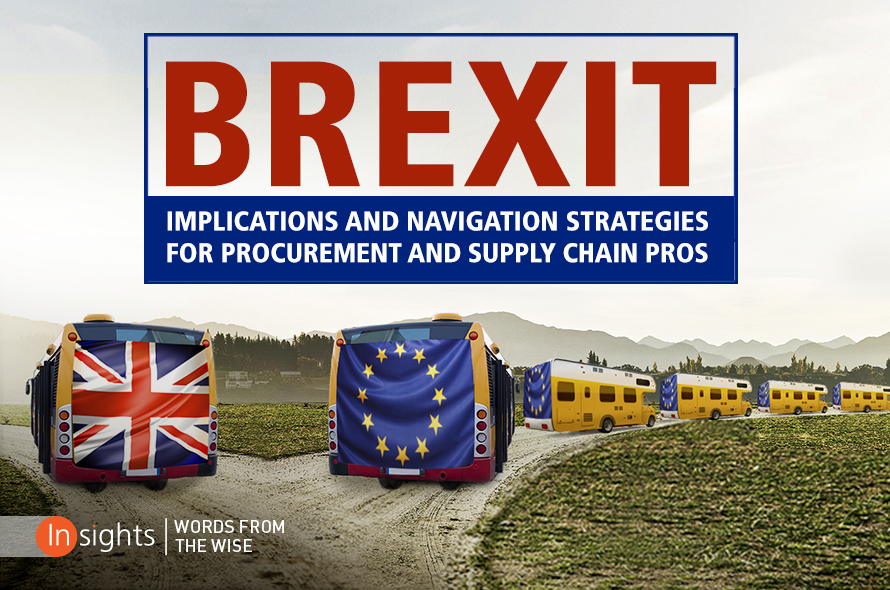Introduction
While the possibility of Brexit has been known for two years now, the decision of the U.K. to leave the EU has nevertheless surprised many — both within and outside of the U.K. The full implications of this decision may well not been known for some time — Article 50 of the Lisbon Treaty sets out a process for a country to signal its intention to leave as well as a path for the terms of separation to be negotiated and agreed, and sets a two-year deadline for this to happen. But this deadline can be extended if unanimously agreed, and Article 50 does not set down any provisions for the agreement of a new trade deal. Article 50 is also not the only way for the U.K. to leave the EU, although alternative routes, such as unilateral changes to U.K. legislation, are likely to antagonize the rest of Europe.
In short, many things are currently unclear: what will future trade arrangements be? How long will it take for them to come into effect? How will they be negotiated? Who will negotiate them? As the U.K. government formally supported the Remain camp, no official approach for Brexit has been defined in London and a change at the top of government needs to be settled before concrete progress can be made.
This paper was published in June 2016. Some of the discussions in this paper may no longer be relevant, or valid. To read our latest views on Brexit, please click here.
And what of the possible knock-on effects? A renewed referendum for Scottish independence looks almost certain, while calls for referenda in other European countries have been emboldened by the events across the English Channel. The only certainty is that businesses will face several years of uncertainty.
While GEP has no more of a crystal ball than anyone else, we can help CPOs and procurement leaders deal with this uncertainty and prepare appropriate strategies for their procurement organizations. With all risks come opportunities. To survive and thrive in such volatile conditions, companies need to understand and mitigate the risks, and plan for different scenarios. Enterprise procurement departments, in particular, need to understand the implications for their supply base and, in very short order, have answers to the question: “what does this mean for our suppliers and cost base?”
Impact Assessment
The first thing to be done is to understand what the possible impacts are — both of any eventual new trade environment and the interim period of uncertainty. This is best done in the first instance in a top-down fashion — what types of outcomes are possible and in what ways they might impact both companies and their suppliers?
We can group the longer-term impacts into three tightly interrelated categories:
- Fiscal impacts — such as currency exposure and the cost of capital
- Commercial impacts — such as tariffs, taxes and the cost of complying with any regulatory implications
- Structural impacts — such as geographical network changes, restrictions on the movement of people, and data hosting requirements
In the short term, we can also identify the following types of impact:
- Freezing of investment decisions
- Defensive corporate behavior and an increased focus on margins and cash flow
- Reassessment of priorities and the mothballing of in-flight programs
What Should Procurement Be Doing Right Now?
To get on the front foot and help their companies ride out the storm, and even gain possible competitive advantages, enterprise procurement leaders need to do the following things now:
- Understand the potential impacts on their own procurement organization
- Immediately assess and prioritize risks in their supply base
- Rapidly develop an action plan to build resilience and flexibility into both their organization and their supply base on the basis of robust scenario planning — this will take some time to implement, so developing a plan quickly must be a priority
- Implement some quick-win actions and policy changes to help de-risk their situation, in particular considering contract duration and break clauses
To do all of these things, procurement leaders need to rapidly deploy structured approaches and engage key stakeholders, both internal and external:
- Alignment with board-level risk management — this is a topic that the rest of the organization will be considering anyway
- Data-driven segmentation and classification to prioritize the most important issues and suppliers
- Direct and open dialogue with key suppliers to better understand their impact assessments and start to plan mutual mitigation strategies
- Internal impact assessment workshops with all corporate functions to ensure alignment on key third-party risks
- Contract review for all key suppliers
- Set up of supply market intelligence feeds to get early warnings of evolving supply base risks, as well as better understanding of the structural risks of different supply categories
Keep Calm and Carry on Buying
In times of uncertainty, it is easy to overreact and be overwhelmed with the complexity of what might happen. Despite all of the very real challenges ahead, it is highly likely that the U.K. and the EU, as well as the rest of the world, will continue to trade with each other in a way not too different from today.
However, by being proactive and getting on the front foot with a robust impact assessment, procurement can help deliver competitive advantage to their organizations. As investment decisions are deferred and suppliers and competitors consider their own strategies, there are opportunities for well-organized and proactive procurement organizations to actually turn risks into opportunities.

